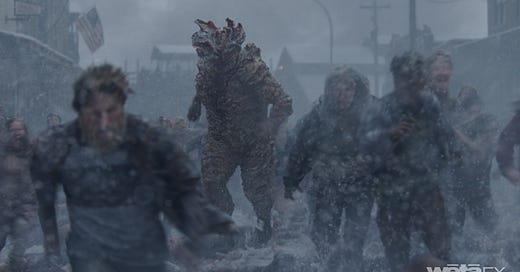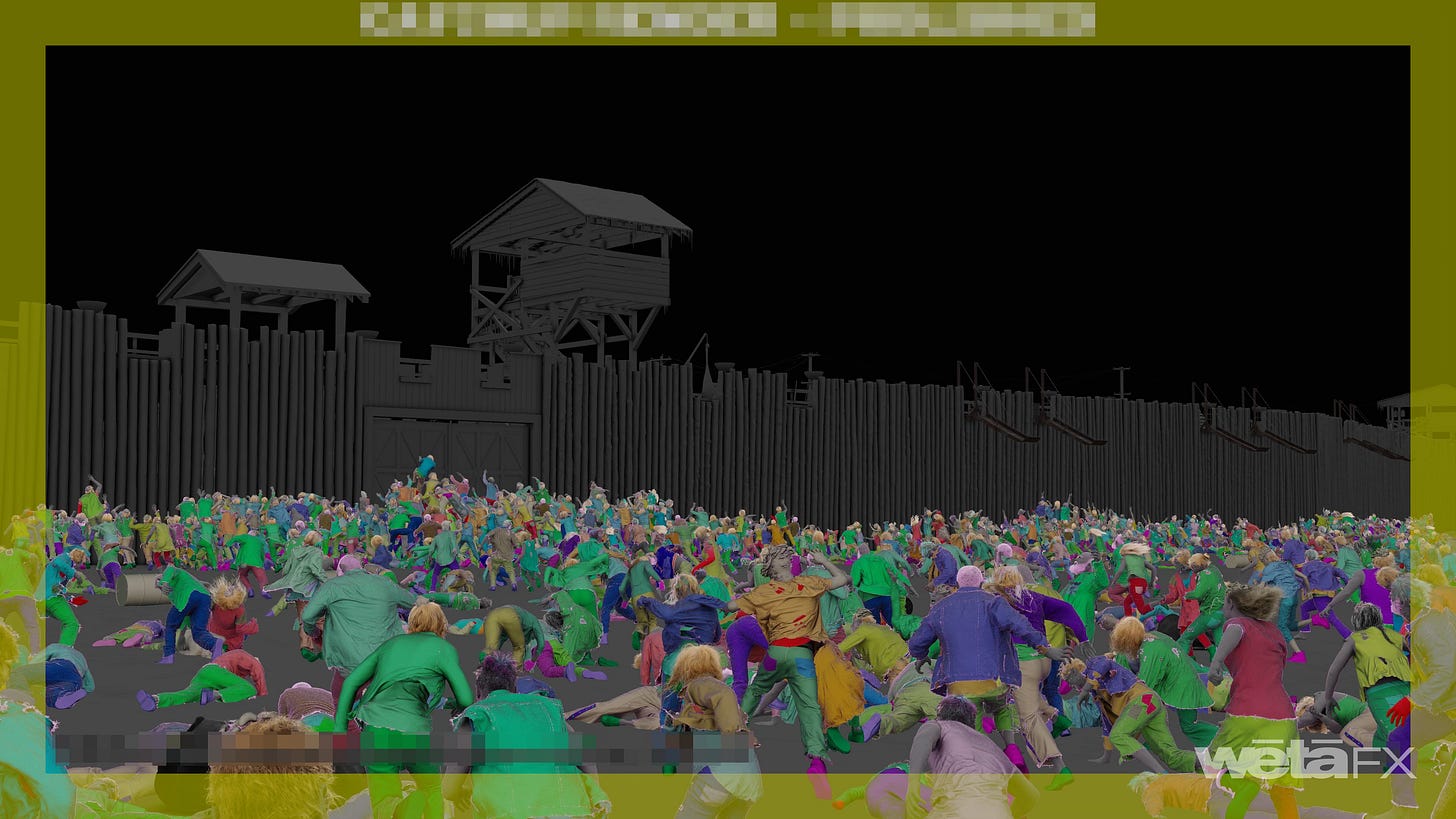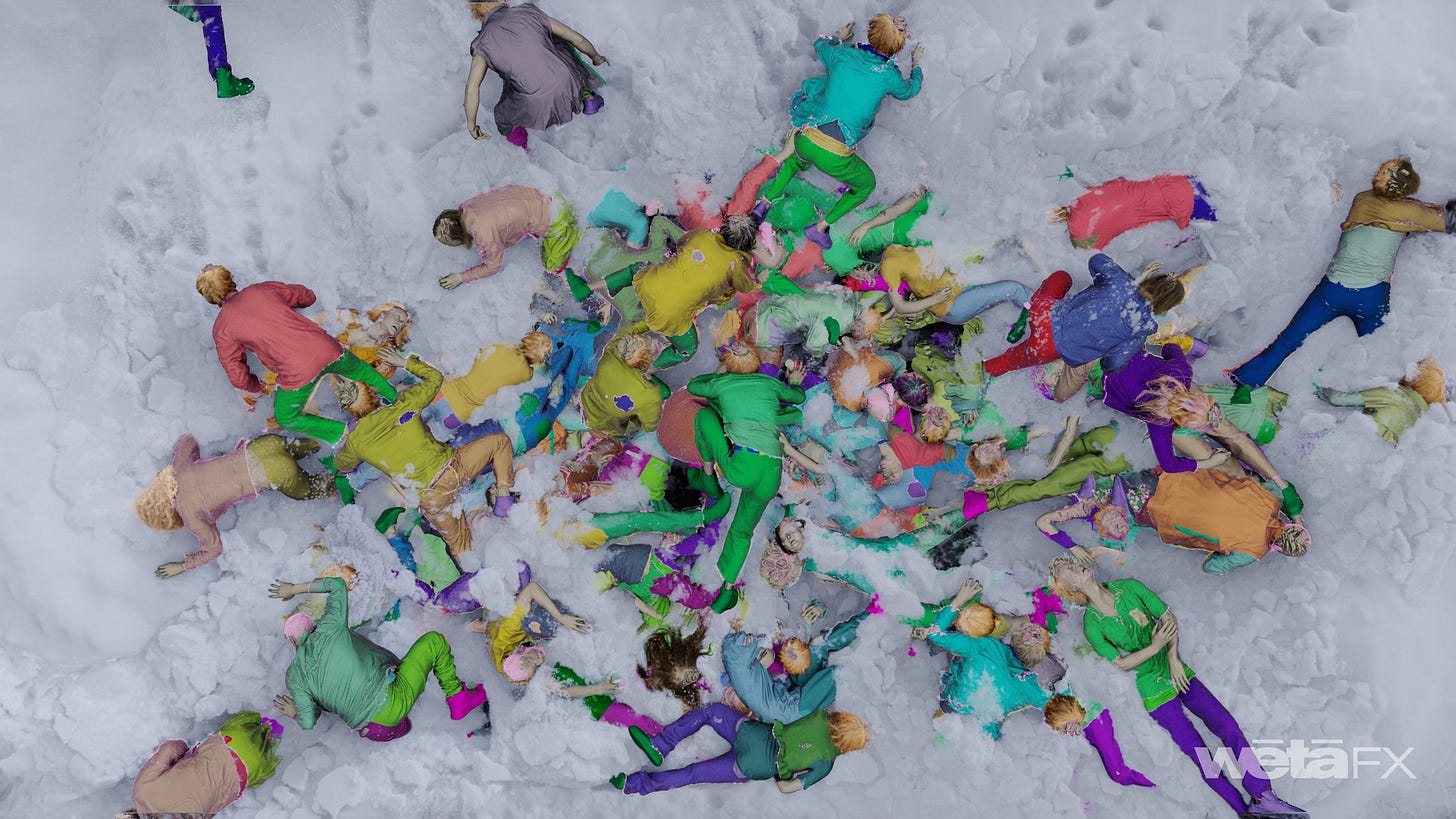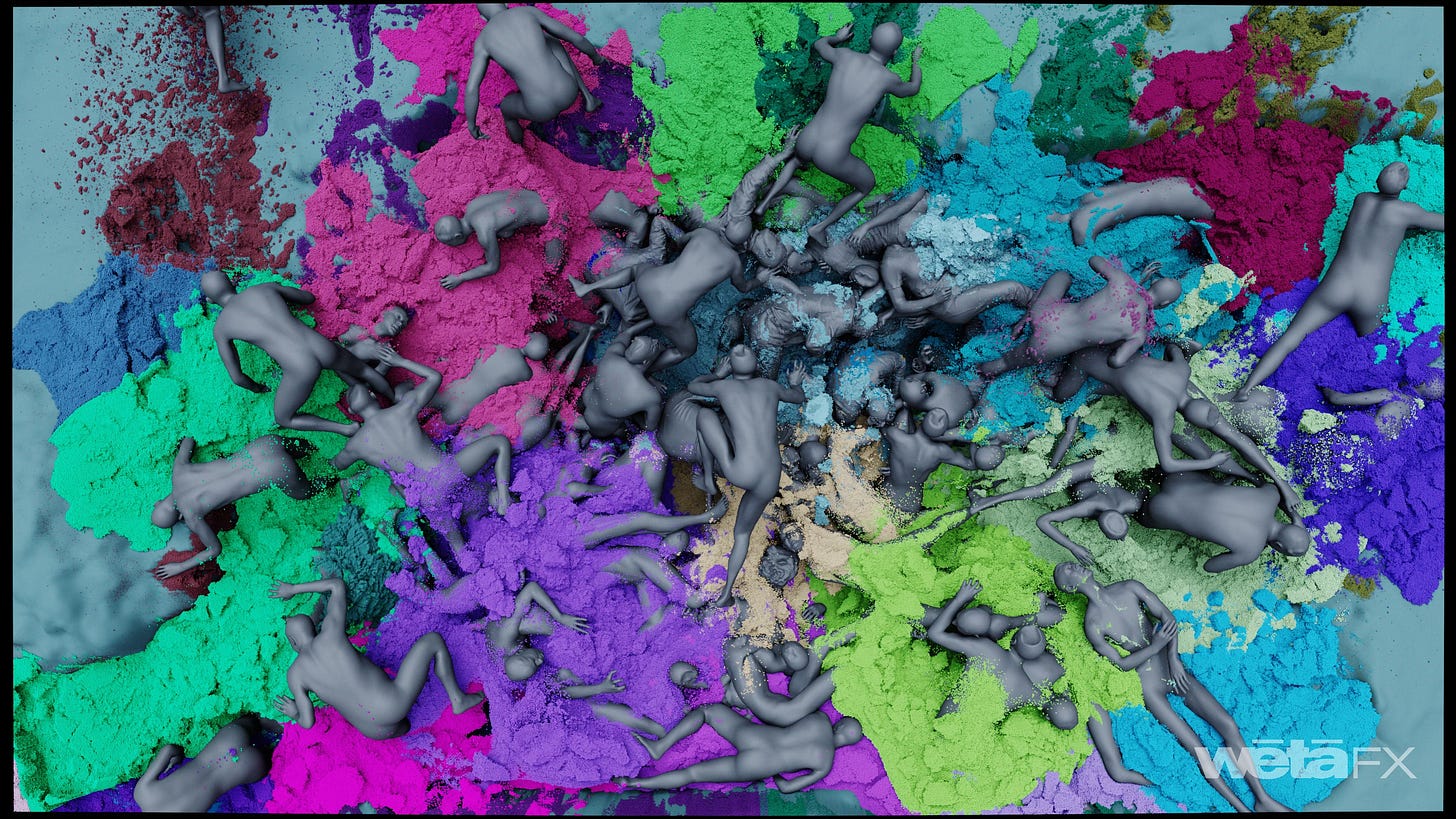Weta FX's Dennis Yoo And Nick Epstein On The Clickers, Bloats, And Shamblers Of 'The Last Of Us' Season Two
The award winning animation supervisor and the visual effects supervisor reflect on making the impossible possible...
The Last of Us is the popular HBO series created by Craig Mazin and Neil Druckmann, and it has just completed its second season. Based on the epic video game franchise, it is the story of the collapse of society caused by a virus that has transformed people into zombie-like creatures. This type of story set on an epic scale needed the best VFX in the business, with Weta FX, who did next-level work on this expansive story.
Award-winning animation supervisor Dennis Yoo and visual effects supervisor Nick Epstein commanded this complex task. Yoo has over 20 years of experience in feature animation and has a resume of some of the most memorable recent films, including The Lord of the Rings: The Return of the King, Avatar, and The Batman. Epstein worked at Framestore, Rising Sun Pictures, and Digital Domain, and has been with Weta since 2008 and has worked on projects like Godzilla X Kong: The New Empire, Avatar: The Way of Water, and Alita: Battle Angel. Yoo and Epstein recently spoke to Immersive via Zoom about the immensity of this project.
[This conversation has been edited for clarity and length.]
Let's talk about Last of Us season two. Dennis, you were on the first season, and Nick, you joined for season two. Talk a little bit about starting the project. It looks like you guys did a pre-vis on that. What was that process like in this series?
Dennis Yoo: I was in the middle of finishing Kingdom of the Planet Of The Apes. I was pretty busy when that pre-vis landed. I wanted to head that up, but I didn't get to do that. Michael Cozens supervised that. I stood in to help for a few days on capturing and getting him in tune with what they might need, and then he took it from there. He got a script from Craig Mazin and then started blocking that into segments so that they could create the pre-vis. We mo-capped before we had even had a visual of anything, which was interesting 'cause we never did that before.
Nick Epstein: I was on set for the Jackson Battle. The pre-vis was successful; it was used by the director, the DP, and the showrunner all the time. Regularly, you'd see people holding up a screen, referring back to the preview when they were blocking shots. There were moments when we got a call saying this was what they wanted. Dennis would do a few revisions and send it back over, and I could show that on set. Is this what you guys are thinking? The iterative process was powerful, and being close to the filmmakers was great.
What was it like working with Craig and Neil's team? What expectations were set, and what was the workflow like?
Nick Epstein: It was fairly daunting because the expectations were pretty high. These guys have an incredible body of work. Season one was terrific, not just the story, but the visual standard was set so high, so obviously, we wanna take it to new levels and expand upon what they did for season one. We worked closely with them on developing the new bloat for season two. It was quite a fun process, seeing Craig and Neil respond to our design process and watching them work, and it has been fascinating as well. Their approach to shooting is grounded with practical live action for everything. Then, of course, you augment and replace bits, but it's all in service of that initial vision laid out for you.
That sounds very interesting. I'm wondering what the motivation is if it's ideally for the actor's believability...
Nick Epstein: There's a great quote from Gabriel Luna where he's talking about walking onto the Jackson set; he said, "You don't have to act; you just react because it's all there." I think that influenced the performances. For some of the battle work, I think it's like seeing 30 or 40 stunt actors going full tilt. You can't replicate that. I appreciate that they went to those lengths to shoot like that because it sets this realistic bar for us. We have to do at least as good as that, and always better, you know?
Dennis Yoo: They built this rich world, and the thought process of telling that story is deep. Craig's all story-driven, so we must ensure everything written is covered. Often, he would say, "Go back and read the script." He's trying to add those story elements into the visual effects; that means a lot. It's just not candy floss; it's telling the story. That's the main goal.
Absolutely. Good visual effects enhance that, not replace it. Let's talk about the hordes of the infected and the design for this specific season.
Nick Epstein: In season one, they built many different variants of the infected and had some really incredible prosthetics work for the horde. Many of them were earlier infected, so their prosthetics were less advanced. As the story progresses in season two, the hordes are fully infected clickers, bloats, and shamblers. We started building everyone from scans of the stunt actors—we had 30 base scans. It's based on what they shot on set.
I think we had almost a thousand of them in some shots. So, we had to develop some clever variation techniques and tactics. One of the things we did was mix and match costumes and hair. So, any infected person could wear any clothing and inherit any hair. Credit to one of our creature artists, Claudio Gonzales, who made this fully dynamic. All these characters had different proportions, so it's difficult to put a small character's clothing on a bigger character. Claudio figured out a system that would allow us to do that.
One of the other things we did was expose some procedural texturing controls for lighting artists. So we didn't always have to return to the assets to re-author looks and things like that. The lighting artists themselves would be able to address Craig's notes, such as, "It'd be great if this guy was wearing a red checkered shirt," and we could actually execute them. We had access to infinite variation and came up with a number of presets.
Nick, you have a lighting background, so I'd like to focus on that for a moment. How did that skill set inform your work here?
Nick Epstein: From a lighting perspective, because so much was shot practically, the job was replicating the on-set conditions. The variation part and lighting artists having control over the amount of snow and dirt coverage was great. It's a creative aspect that I think the lighting crew wouldn't have expected coming onto the show that they would be in control of things like that.
Dennis, the hordes of the infected.
Dennis Yoo: It was a daunting task. I don't think we've ever done hordes like that. As we've done, we've done wide shots and the big battle scenes, but this, for some reason, possibly the lighting, Nick, wasn't it?
Nick Epstein: Daylight was very unforgiving. Broad daylight. It was just very bright. When we were wrapping this up, everyone was a hero character we didn't really compromise on. We had to hold them all close to the camera and far away. That's a pretty big ask of over a thousand characters.
Dennis Yoo: I think that's what made it so difficult. In season one, we had up to 900 infected people pulling out of a hole in contrast lighting - it just helped to have that darker light. Then, having this diffused lighting where you see the whole crowd at once all the time started bringing up questions like actually, you know, just throwing motion in there individually. It didn't cohesively work because it's no longer acting like a crowd. You see a massive crowd, and you just start seeing this organic shift, and the crowd starts becoming fluid.
That's when I started realizing we have a lot to try to figure out here. That was one of the things where we used massive a little bit differently, where we got the base of the massive organically moving as a crowd. We started working on some Ragdoll simulations where the crowds can interact and bump into each other. I could only capture five or six performers simultaneously, and that won't look like hundreds of people.
Was there any particular sequence you thought... I don't know how we will do this.
Nick Epstein: Almost all of the battle was like that. I was on set. I saw it coming together in camera and knew the challenges we were gonna be up against. The weather variability was hugely challenging for us because, within a day, you would have sunshine, pouring rain, and then snow at the end of winter in Canada. Everything had to be conformed to this blizzard. It's a huge story point about the storm rolling in, so we knew early on that was gonna be a huge challenge, and we needed to have a very robust segmentation & depth extraction toolkit that allows us to insert weather, extract depth information, and mats from plates that weren't shot with stereo cameras. This is all monocular stuff. We inserted our own weather.
Anything else, Dennis? Is there a challenge that really stood out to you?
Dennis Yoo: It was daunting doing pre-vis and figuring out how we would shoot a lot of CG dogs. I kept mentioning to Nick that dogs are tough to get right motion-wise. It was one of the challenges we knew would be hard, so we prepped it well. The horde coming out of the ground that one just kept opening up into something bigger and larger, especially motion-wise, was hard. I didn't realize we needed guys clotting through other guys. That was one of the bigger challenges we had to figure out how to do. That was one of the last shots that we had done.
Nick Epstein: That was the last one that went out. Talk about the challenge of challenges; that shot, in particular, was the hardest thing. This shot of the horde coming up from the ground needed to descend into the snow as these guys were crawling out. The motion was one thing. The snow simulation was another. I think we did 23 base simulations.
What's it like being on the other end of this season now?
Dennis Yoo: Honestly, it's a relief. We were running so hard. It felt like a 400-meter dash, just a constant sprint. It took a lot out of us, but it's also quite rewarding to see the fans' reactions.
Nick Epstein: Relief, I think's a good one. I am grateful for how the filmmakers approached this, how they shot it, and going back to the games to be part of that. I'm quite grateful to the leadership of Alex Wang, the production visual effects supervisor. I'm proud and grateful to be part of it.
The Last Of Us season two is streaming on MAX.








